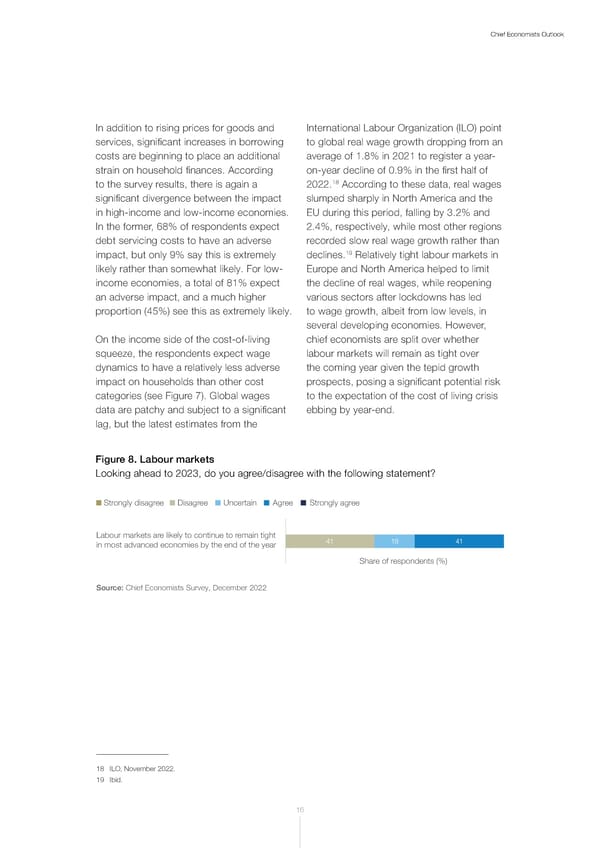16 Chief Economists Outlook In addition to rising prices for goods and services, significant increases in borrowing costs are beginning to place an additional strain on household finances. According to the survey results, there is again a significant divergence between the impact in high-income and low-income economies. In the former, 68% of respondents expect debt servicing costs to have an adverse impact, but only 9% say this is extremely likely rather than somewhat likely. For low- income economies, a total of 81% expect an adverse impact, and a much higher proportion (45%) see this as extremely likely. On the income side of the cost-of-living squeeze, the respondents expect wage dynamics to have a relatively less adverse impact on households than other cost categories (see Figure 7). Global wages data are patchy and subject to a significant lag, but the latest estimates from the International Labour Organization (ILO) point to global real wage growth dropping from an average of 1.8% in 2021 to register a year- on-year decline of 0.9% in the first half of 2022. 18 According to these data, real wages slumped sharply in North America and the EU during this period, falling by 3.2% and 2.4%, respectively, while most other regions recorded slow real wage growth rather than declines. 19 Relatively tight labour markets in Europe and North America helped to limit the decline of real wages, while reopening various sectors after lockdowns has led to wage growth, albeit from low levels, in several developing economies. However, chief economists are split over whether labour markets will remain as tight over the coming year given the tepid growth prospects, posing a significant potential risk to the expectation of the cost of living crisis ebbing by year-end. Figure 8. Labour markets Looking ahead to 2023, do you agree/disagree with the following statement? 1 1 4 4 Labour markets are likely to continue to remain tight in most advanced economies by the end of the year Share of respondents (%) 41 18 41 Strongly disagree Disagree Uncertain Agree Strongly agree Source: Chief Economists Survey, December 2022 18 ILO, November 2022. 19 Ibid.
 WEF Chief Economists Outlook 2023 Page 15 Page 17
WEF Chief Economists Outlook 2023 Page 15 Page 17